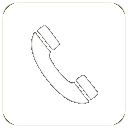New Law: Winter Tires now Mandatory in most of BC
A new law was recently passed which requires all drivers to use winter tires throughout much of BC. These tires must be on vehicles from October 1st to March 31st annually. The new law applies to almost any highway outside of the Lower Mainland and southern Vancouver Island. The areas where cold weather tires are required include (but are not limited to) the following:
- Highway 99 (en route to Whistler/Pemberton)
- Highway 4 (en route to Port Alberni/Ucluelet)
- Most of Highway 1, and Highway 3 (en route to Hope and beyond from Vancouver)
- All major highways in the Southern Interior and Northern Region.
(ICBC injury claims lawyers)
Vancouver Rear End Collision Lawyers
Call us today for a free consultation 604-684-4300
*We now have an office in Surrey,
click for information about our Surrey Rear End Collisions Lawyers – ICBC Injury Claims
Drivers who do not have appropriate tires may be fined $121. Similarly, the police have the authority to turn you around from wherever you are going, and send you packing back home.
You are not required to have winter tires specifically in Vancouver and some other parts of the lower mainland. However, a lack of these tires means that most of your travelling to other parts of BC would be severely limited. Legally, you would not be able to travel to Squamish, Whistler, most of Vancouver Island, or Hope and beyond.
In our opinion, even if your driving is limited to Vancouver or the lower mainland, it is a very good idea to have winter tires. As occurred last year, the lower mainland does get hit with periods of freezing roads and snow. Anyone driving to work on those days can easily see the chaos that occurs when vehicles do not have proper tires. Cars with summer tires often get stuck on very small inclines. This backs up traffic considerably. Vehicles skidding off the road in areas of decline/downhill is also a very common sight in the lower mainland on a snowy day.
An example of the chaos that happens on a winter day is as follows: In the second week of February 2017, during a week of ongoing snowfall, calls to ICBC reporting crashes increased by 45% from the same time in the previous year. In other words, the calls to ICBC for car crashes can almost double during snow/freezing driving conditions.
How do you know if your tires are legally considered appropriate for winter? Any such tire will have a certain symbol on the side, which includes the following:
- The mountain and snowflake symbol (which shows a mountain inside a snowflake)
- Mud and Snow Symbol (Says “M+S” – may also have a snowflake)
Please keep in mind that the safest bet to ensure you have the correct legal tires for winter, and the safest tires for winter, is to have the “snowflake” symbol on the side, or even better, the mountain and snowflake symbol. Tires with the M+S symbol may meet the basic winter legal requirements, but they do not offer the same safety as tires with the mountain/snowflake symbol on the side.
(ICBC injury claims lawyers)
Vancouver Rear End Collision Lawyers
Call us today for a free consultation 604-684-4300

BACK to: Vancouver Rear End Collisions Claims
Author:



